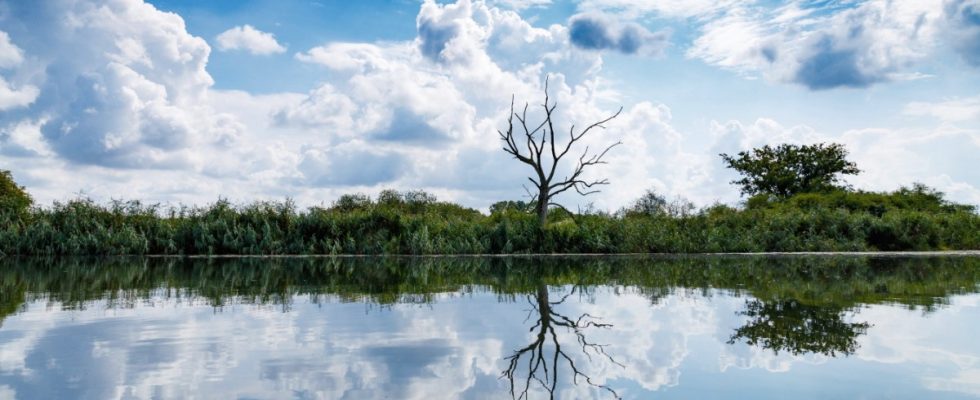It’s hard not to drown in the information overload that floods the e-mail inbox every day. Freshly washed up: an invitation to an autumn safari on the “Amazon of the North”. According to the advertising text, which is written quite fluently, the Amazon of the North is the Peene, a small river in Mecklenburg-Western Pomerania. “Paddling on the Peene” would have been deleted immediately, but “Amazon of the North”? Sounds adventurous.
Did a self-proclaimed Mark Twain of travel PR come up with the “Amazon of the North”? Or why is the comparatively poppy Peene called the largest river in the world? The Amazon of South America is 6400 kilometers long, up to ten kilometers wide and up to 100 meters deep. The Amazon of northern Germany is only 126 kilometers long and a maximum of five meters deep. There are no piranhas, no crocodiles and no dolphins in the Peene, but eels and catfish. The gradient of the Peene is 30 centimeters per hundred kilometers, it sloshes lazily through the flat landscape. Whitewater is different.
Still water is patient, isn’t that what it’s called? That is why in many places an Amazon can be found in streams or ponds, even in meadows. Hamburg also lays claim to the title “Amazon of the North”: The Alte Süderelbe is officially the second largest lake in the Hanseatic city and is advertised as a jungle-like Amazon region. Surprisingly, there are nature lovers who celebrate the Wupper, a former industrial cesspool, as the “Amazon of the Bergisches Land”, which can be read in a lavishly sprawling illustrated book. The Danube near Vilshofen is referred to as the Bavarian Amazon, according to the Bavarian radio station the Isar-Amazon, the area where the Isar meets the Danube near Deggendorf, is very close by.
Is every rivulet that meanders in loops through a forest equal to an Amazon of something? No, it doesn’t even need water. “Up to 5000 different animal and plant species live in and from a meadow orchard,” one learns at one Naturgarten website, “thus they are also referred to as the Amazon of the West.” Amazon of the north, west, south – what’s actually going on in the east, Amazon-like? Some: The rivers Biebrza and Narew in Poland form the Amazon region of Eastern Europe, there is competition from the mouth of the Danube in Romania and from the Amazon of the Balkans, the Sava. Further east are the alluvial forests of the Bikin River, the Amazon of Russia. The Amur is the Amazon of Asia, which is also the name of a television series that meanders fascinatingly in three parts. Then there is the Kinabatangan, the Amazon of the East, a river in Borneo. Not to be confused with the Amazon of East Germany, the Spreewald!
Even the small Saarland has its own Saarmazonas. Junior, the children’s supplement of the Apotheken-Umschau accidentally printed a mirror-inverted photo of the Saar loop on a double page spread to illustrate an Amazon story. Well, before this running text gets out of hand and silts up in shallow side arms, let’s end this imaginary river safari.
However, a dry final comment is allowed: In the PR industry, it is important to label travel destinations with keywords so that they attract attention. However, great care must be taken to ensure that nothing goes wrong. As the real Mark Twain of travel literature put it: “If you don’t know where you want to go, don’t be surprised if you end up somewhere completely different.”
Titus Arnu has already paddled on the Amazon from Starnberg, the Würm. He only knows the real Amazon from films and comics.
(Photo: Bernd Schifferdecker (Illustration))

